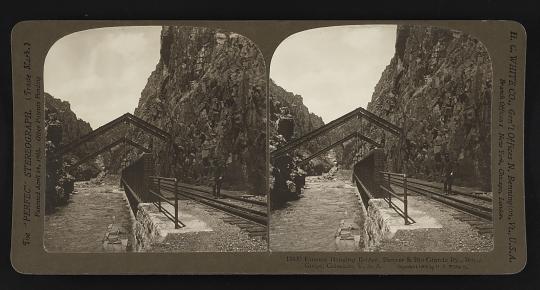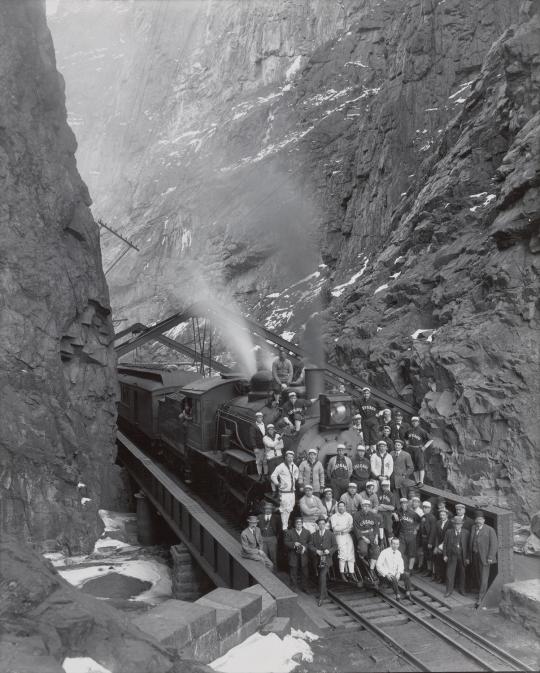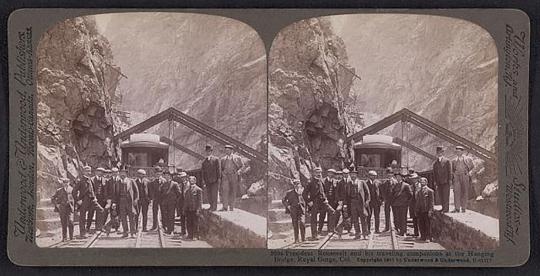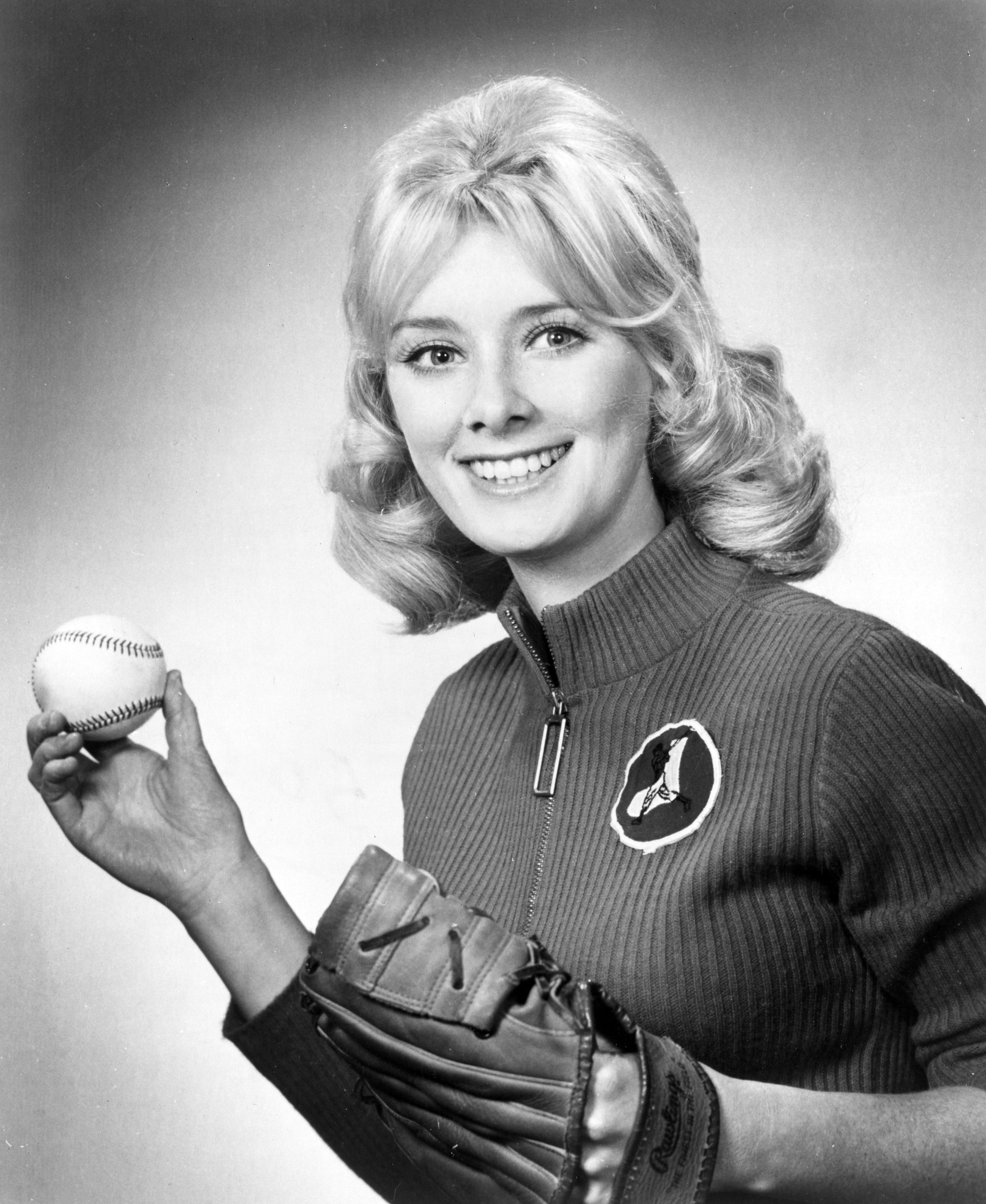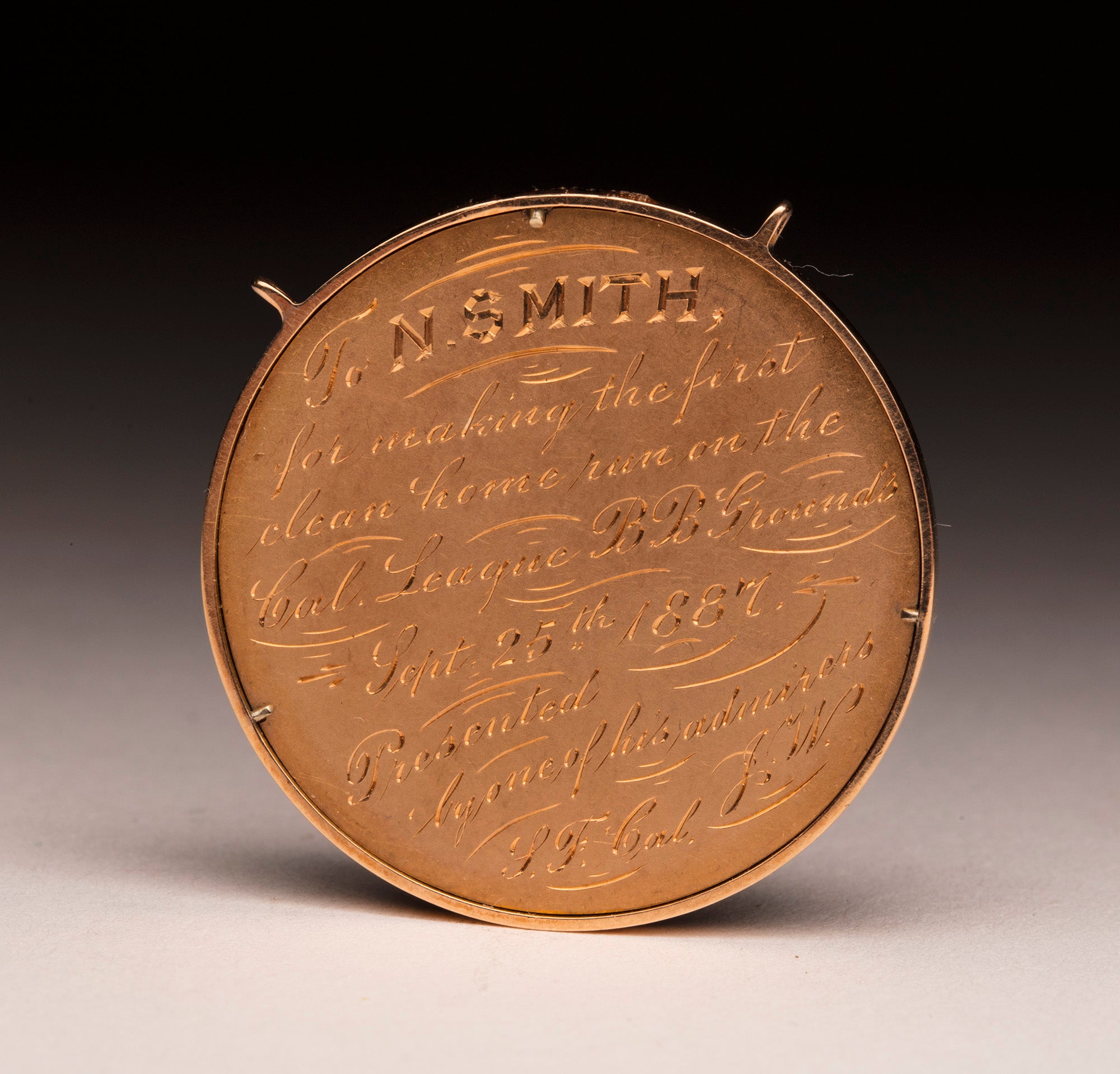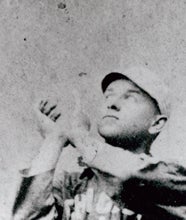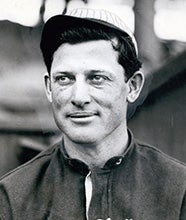- Home
- Our Stories
- #Shortstops: Sox on the Bridge
#Shortstops: Sox on the Bridge
On Feb. 27, 1910, the Chicago White Sox, traveling westward across the country to Spring Training in San Francisco, paused their journey to pose for a series of photographs at the Royal Gorge Hanging Bridge located along the Arkansas River in Fremont County, Colo.
These photographs, although a rarity in the baseball world, were actually a fairly common part of the larger American experience with passengers from all walks of life stopping for a picture at this spot.
And on this day, the photo featured three future Hall of Famers in White Sox pitcher Ed Walsh, White Sox manager Hugh Duffy and team owner Charles Comiskey.
The Hanging Bridge was completed in 1879 in the middle of the Royal Gorge War, an expansion dispute between the Denver and Rio Grande Western Railroad and the Atchison, Topeka, and Santa Fe Railway.
Sabotage, firearms, fortifications, hired guns and federal courtrooms all played a part in the two year battle at the Royal Gorge before the matter was finally settled with the Treaty of Boston in 1879.
Charles Shaler Smith, an assistant project engineer for the Santa Fe Railway, is believed to be the man responsible for figuring out how to build a track through the narrow, 30-foot passageway at the heart of the Royal Gorge canyon where the pre-existing rock formations did not allow for traditional blasting.
Smith developed a bridge with “A” frame steel girders suspended above the structure and anchored into the rock walls overhead. These girders and cables can be seen above the train and players in both images.
The Chicago White Sox stopped to pose for a series of photographs at the Royal Gorge Hanging Bridge while on their way to Spring Training in 1910. Three future Hall of Famers can be seen in this picture: Ed Walsh, Hugh Duffy and Charles Comiskey. (National Baseball Hall of Fame and Museum)
Share this image:
Upon completion, the Hanging Bridge was viewed as a feat of structural engineering and early trains that passed through the gorge would stop to allow passengers to examine the bridge and take photographs. Some of the trains even had open platform observation cars to allow passengers to see the structure without having to stop the train.
The most famously documented visits to the Hanging Bridge were the White Sox in 1910 and President Theodore Roosevelt, who stopped at the bridge during a visit to the area in 1905.
Based on the location of the girders in each image that the White Sox took, it appears that the team first posed for a photograph at the front of the train, standing on and around the locomotive.
A few players were even standing on the nearby ledge, undeterred by the drop to the icy Arkansas River below.
It then appears that they all re-boarded the train, which moved forward along the track until the back of the train was on the 175-foot bridge.
There, the players, along with other passengers, posed in front of the last Pullman car, once again with some players leaning out over the gorge.
The canyon’s rock walls can be seen towering over the players and the train, rising 2,600 feet above the track.
Kelli Bogan was the Photo Archivist and Director of Digital Assets at the National Baseball Hall of Fame and Museum

